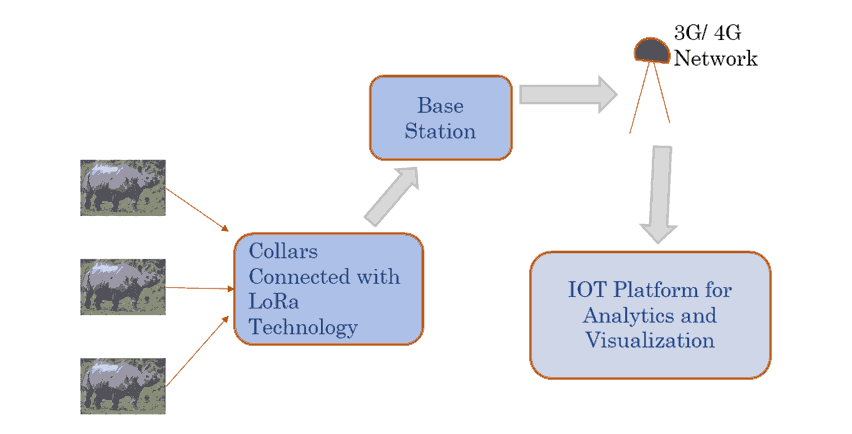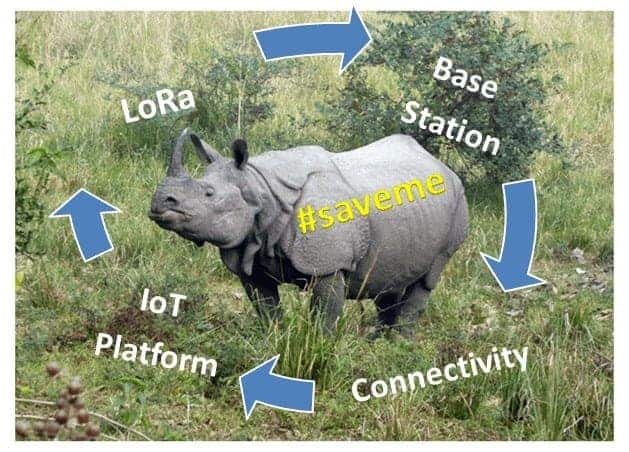The Greater One-Horned Rhinoceros or also known as Indian Rhinoceros , are listed as one of the most threatened species by the International Union for Conservation of Nature.
The animal can be found in North-East parts of India and at foothills of Himalayas in Nepal.
Poaching of horns is a primary reason for the decline in the number of the Indian Rhinoceros. There has been an impressive rise in the numbers of Indian Rhinoceros since 1975, but there is a continuous threat due to an increase in hunting cases.
Due to flood caused by Brahmaputra river animals move to the high altitudes, where they are easy prey to poachers. More efforts should be undertaken for the conservation of the Greater One-Horned Rhinoceros.
Protect Rhinoceros using IoT Technology :


We need real time monitoring of Great One-Horned Rhinos to save from poachers and its solution can be provided by Internet of Things (IoT). Customized collars having sensors can be fitted to Rhinos and also to other species in the park. The collars should have LoRa (Long Range) technology sensors which can send its current position, also it can have different sensors to get temperature, heart rate, or any other parameterof animal. LoRa operates in ISM band and uses 900MHz frequency to send the data & a tested range of 22 km in LoS (Line of Sight) which is suitable technology for saving endangered wildlife species.
Base stations with LoRaWAN can be setup at a radius of 20 km which can collect real time data from the collars fitted to threatened species like Greater One-Horned Rhinoceros. Base station is connected to IoT platform which sends real time data.
See also: LoRa and LoRaWAN- What are these?
By using IoT platform analytics can be done on the real time data like, animal location, animal movement, animal average speed of travel, and animal direction, along with other real time data. The behavior of animals and their habitat location and many such things can be obtained from the IoT analytics.
If a poacher approaches near to animal their behavior like running speed is going to change and this can help Forest guards to reach the location before any threat to animal. It will save lot of cost in infrastructure investment, operating expenses and a precious life.
Using IoT platform insights data can be obtained which helps in studying wildlife researchers. Different visualization can be created with respect to Forest guards, wildlife researchers, animals, etc. and this helps in protecting endangered species.
IBM along with MTN Group, Wageningen University has developed a system which helps in saving African Rhinoceros it can be seen in the following video
Video credit: IBM Watson Channel
Let us know your comment about Indian Rhinoceros and wild life saving with IoT in the comment section below.
If you like this post subscribe our YouTube Channel for IoT video Tutorials. You can also find us on Twitter, Facebook, and Instagram for more updates.
Start your IoT journey with IoT Basics from IoTDunia.
Featured Image Credit : Rhinos.org and IoTDunia













Leave a Review